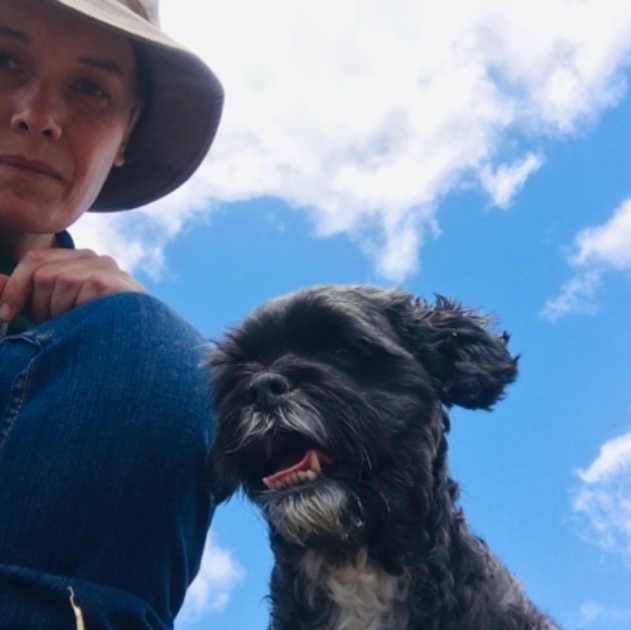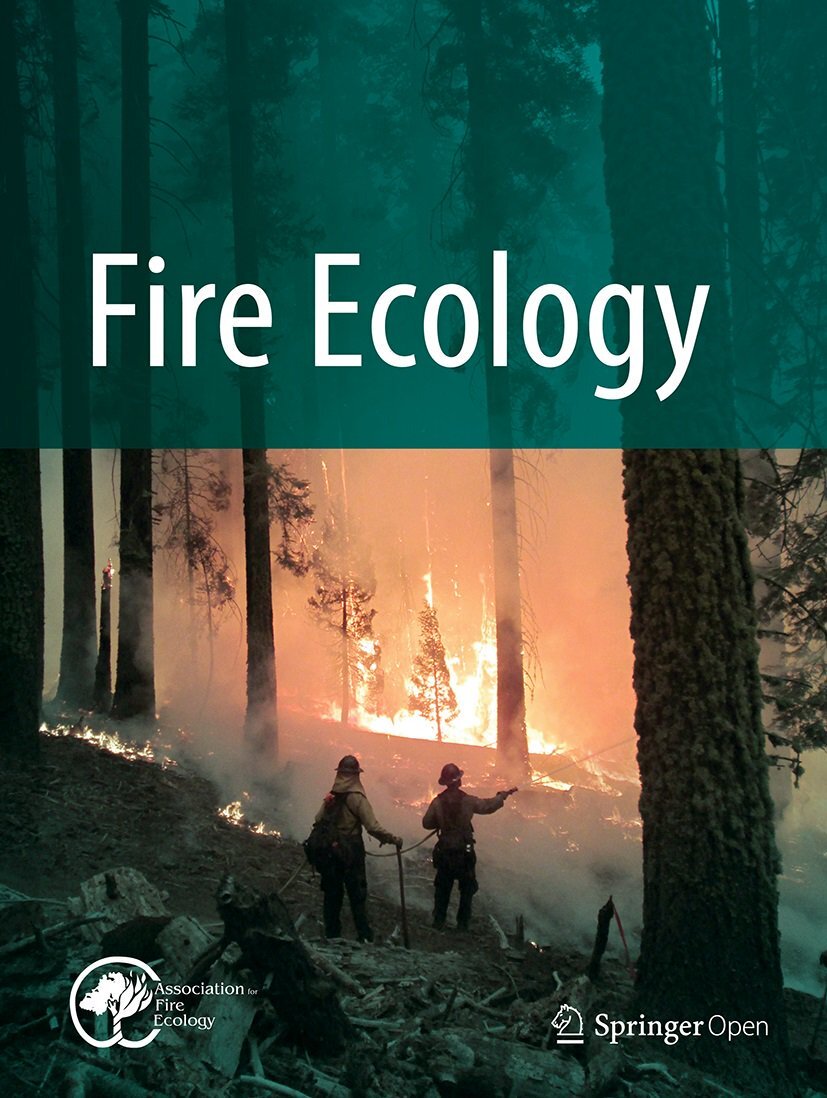Two students awarded the Wayne Harrison Memorial Scholarship in 2023
The Wayne Harrison Memorial Scholarship supports academic and professional growth of students through funding research, management, or education projects related to wildland fire science. AFE received 5 strong applications for the scholarship this year, and a panel of four judges independently reviewed, scored the applications, and selected two awardees.
Congratulations to Poppi Doser and Cristina Vidal!
The heat is on: Investigating variation in form and fire response between and within South Australia’s native Banksia species, B. marginata (Silver banksia) and B. ornata (Desert banksia)
Poppi Doser, Graduate Student
Biological Sciences, Discipline of Ecology & Evolutionary Biology, University of Adelaide, South Australia
Awarded $2500
The catastrophic fires of Black Summer 2019-20 placed global focus on Kangaroo Island (KI). The overall strong regeneration of the native vegetation following those fires has been a positive story. However, the unprecedented scale and intensity of the Black Summer fires has prompted questions around how to best manage native vegetation long-term in the face of altered fire regimes – including increased fire frequency and intensity due to climate change, prescribed burns for fuel reduction or broad-scale biodiversity conservation, and fire exclusion from fire-prone systems.
There are over 300 species of Banksia L.f. native to Australia, just two of which occur naturally in South Australia, Banksia marginata (silver banksia) and B. ornata (desert banksia). Current research suggests inappropriate fire regimes may threaten the survival of these iconic species. Through an investigation into their different forms and fire responses, or recovery strategies, of native Banksia spp. throughout their range, coupled with analysis of fire history and climate data for KI, this research project aims to design a fire management plan for B. marginata and B. ornata as they occur on KI, and elsewhere across South Australia.
The project uses a combination of field and laboratory work and theoretical research, encompassing an:
Investigation into the different forms and fire responses, or recovery strategies, of B. marginata and B. ornata throughout their range;
Analysis of fire history and climate data for KI (and if time, the rest of South Australia); and
Review of the relevant aspects of Australian fire management policy.
The questions the project is aiming to answer along the way, are:
What are the different forms and fire responses of South Australian Banksia species on KI, and how does this compare with these species throughout the rest of their range?
Are altered fire regimes negatively impacting on the survival and distribution of South Australian Banksia spp. on KI?
How will the implementation of appropriate fire regimes contribute to conservation of South Australian Banksia spp. on both KI and throughout the rest of their range, and under climate change?
Post Fire Characterization and Vegetation Resilience in the Paraguayan Humid Chaco
Cristina Vidal, Graduate Student
University of Santiago de Compostela (USC)
Awarded $2000
Latin American forests are of planetary importance, with South America alone holding 21% of the world’s remaining forests (Keenan et al. 2015). Several factors drive land use change, but the conversion of forests to pastures for cattle ranching and agriculture is prevalent in Latin America. Fire is also contributing to this end. According to FAO (2020), only in 2015 more than two-thirds of the total forest area affected was in Africa and South America.
The Gran Chaco is an alluvial sedimentary plain in South America covering more than 647,500 km2 in Northern Argentina, Bolivia, and Paraguay. It harbors high biodiversity, including many endemic species. Unfortunately, this region is also a global deforestation hotspot (R. T. Pennington et. al. 2009) due to the recently accelerated expansion of cattle ranching and soybean cultivation there (H. Conti et. al. 2009). Given the region's agricultural potential and the growing global demands for agricultural products, the pressure to convert additional natural ecosystems into agricultural land remains very high. Besides this feature, the changing fire regime and its impact threaten this ecosystem, leaving it more vulnerable to loss of biodiversity richness.
The proposed study area on the Humid Paraguayan Chaco is a region dedicated to low-intensity cattle rearing, with native grasslands within a mosaic of natural plant formations. Unfortunately, fire recurrence has threatened the few remaining fragmented forests in the last decade. Thus, the damage could have been very severe, leaving the ecosystem degraded with less valuable resources.
Paraguay has very little systematized official historical information from fire events and fewer studies on post-fire effects associated with ecosystem degradation across the Chaco region. Therefore, the main objective of this research is to characterize the recovery trajectories of plant formations impacted by wildfires in the humid Chaco region to identify patterns of resilience or species adaptation. To do this, we will first study the regional fire behavior to identify the patterns of occurrence using remote sensing techniques. Then, based on this characterization, we will establish plots to analyze species' resilience in different forest ecosystems to understand their response and potential post-fire recovery for restoration purposes. The research project has two steps; the first is related to generating a fire regime model and was developed in 2022. This year, we plan to establish forest sample plots based on the previous fire regime map to characterize species' response to a gradient of fire incidence.




